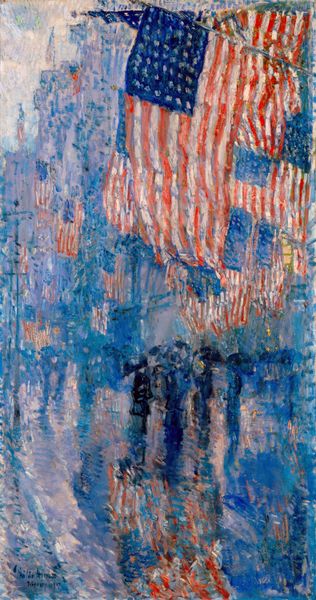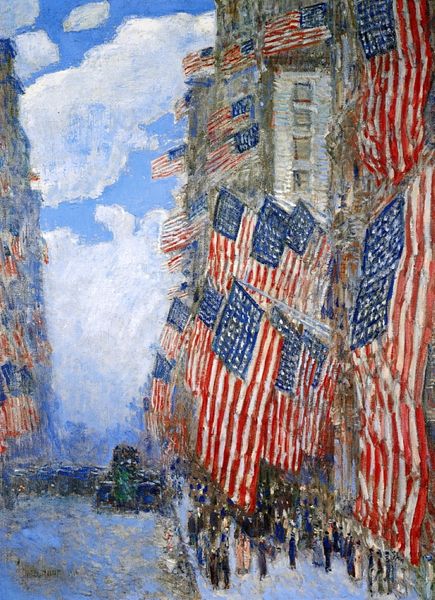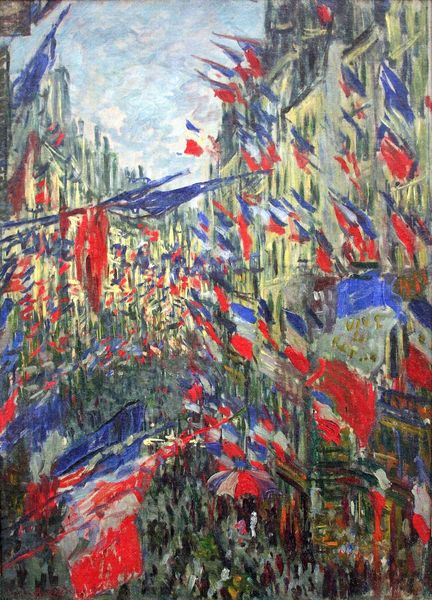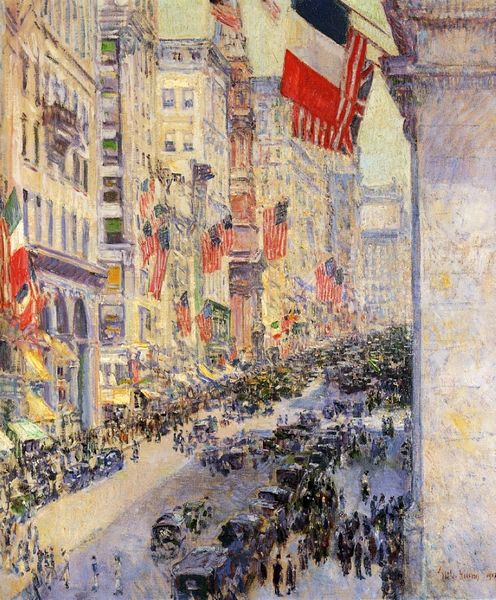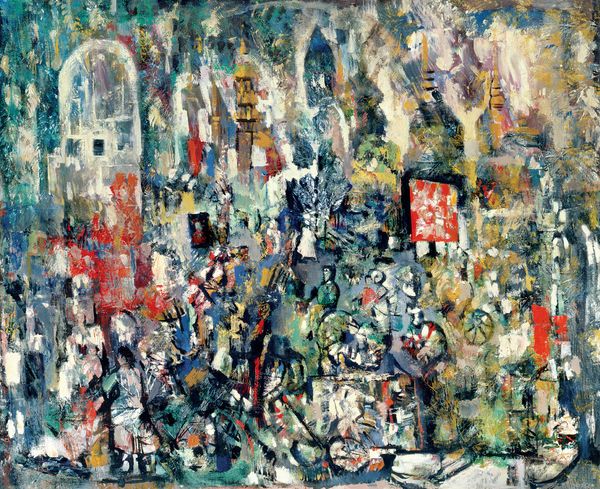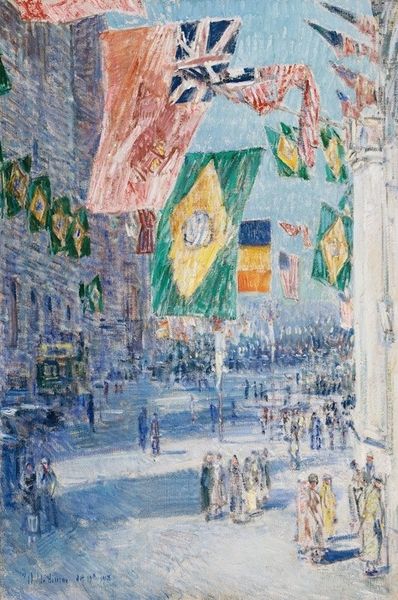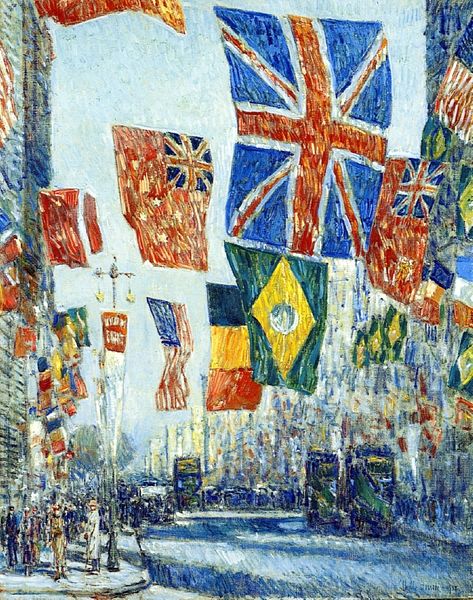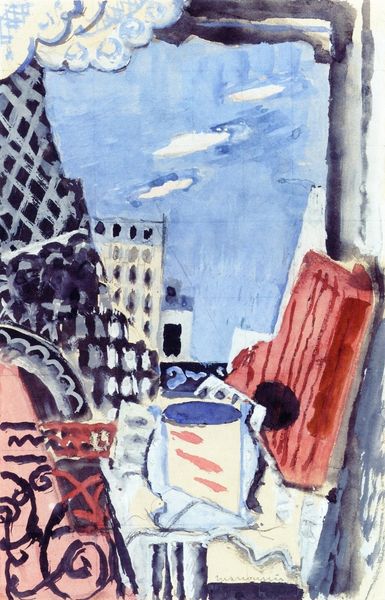
Copyright: Public domain
This is Childe Hassam’s painting, Victory Day, May. Here, Hassam captures a moment in New York City amidst the patriotic fervor of the early 20th century. Painted in an impressionistic style, it’s awash with blues and whites, punctuated by the red of American flags and banners, creating a scene that is both celebratory and dreamlike. What were the implications of such overt patriotism? Banners marked with a ‘V’ for victory hang high above the street, alluding to the collective hope during times of conflict, likely World War I. The scene reflects a desire for unity during times of war and the complexities of national identity and allegiance. Hassam painted over 30 of these 'flag paintings' which he saw as visual odes to the spirit of the nation. Yet the celebratory scene raises questions about who gets to celebrate and at what cost? Who is included and who is excluded? How does the jubilation serve to mask deeper societal fractures and inequalities? Consider the emotional undertones of such national displays, the sense of belonging they create, and the subtle pressures they exert.
Comments
No comments
Be the first to comment and join the conversation on the ultimate creative platform.
